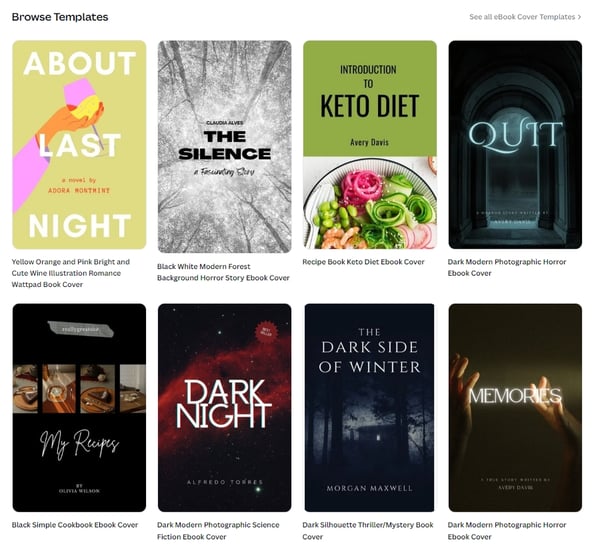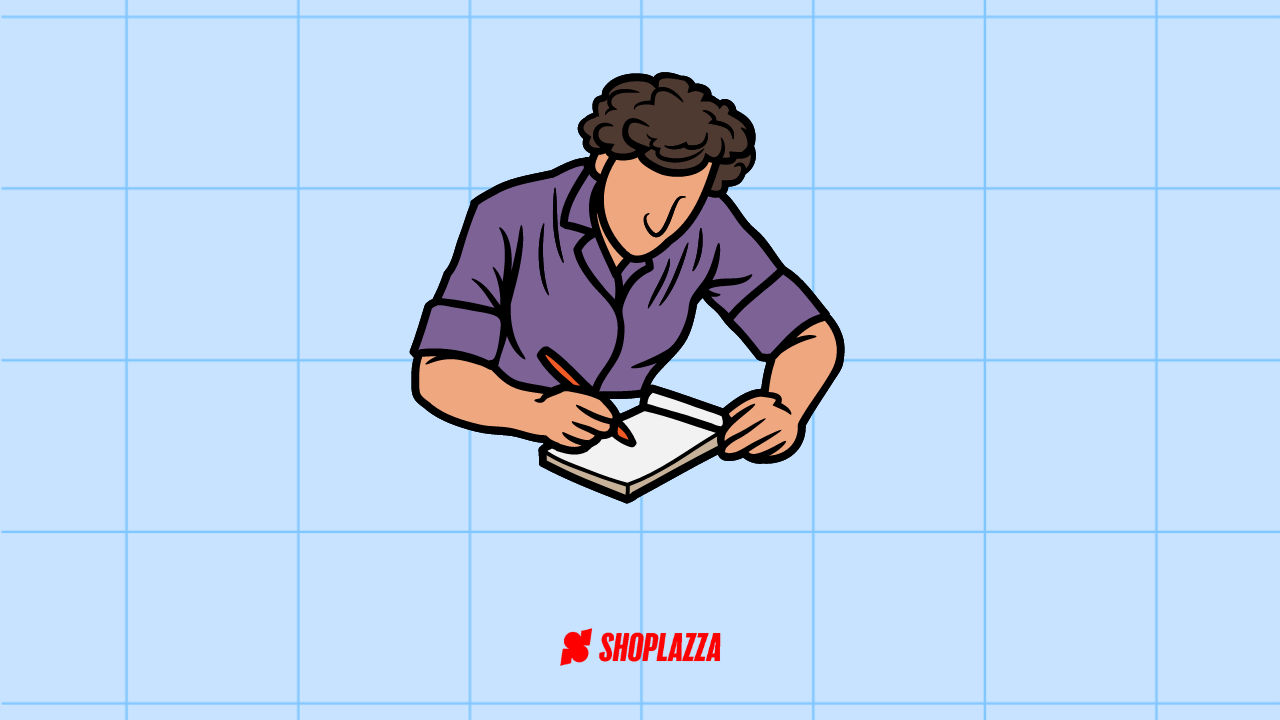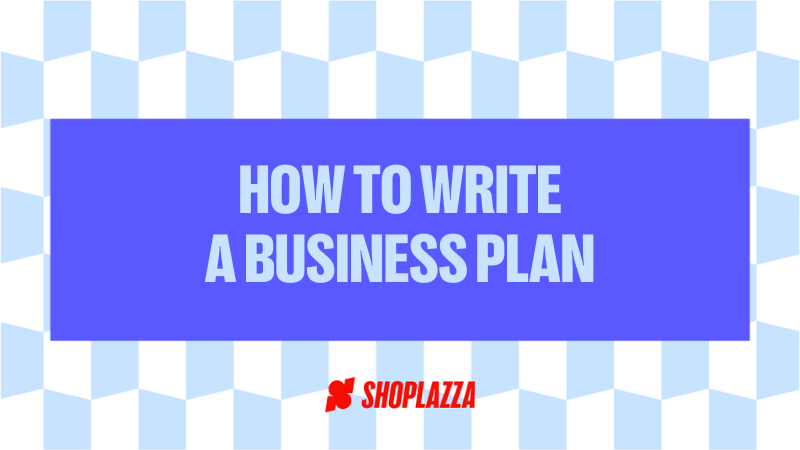
Are you considering the possibility of self-publishing a book but feeling a bit overwhelmed by the whole process? No worries: We’ve got you covered with a quick and detailed guide on how to self-publish a book.
So maybe you’re good with words. Maybe you were the kid who loved writing essays and reading the books that were mandatory reading during your school days. Maybe you still carry a notebook wherever you go, so you can jot down some quick words or ideas that popped into your head.
That’s awesome, right? But maybe — and just maybe — you’re thinking that now’s the time to put your own book out in the world and see if you can get some readers interested in what you say.
The trouble is the road to becoming a published author can be full of stops, unforeseen bumps and bridges that seem a bit hard to cross. This is precisely why a considerable number of writers have been moving away from traditional publishers and focusing instead on the self-publishing process, which tends to be more accessible and a lot quicker.
But self-publishing a book also entails a lot of work to do after you’ve put that final full stop on the last page of your file, so it’s essential that you actually understand the whole “how to self-publish a book” thing before you jump into it.
And this is exactly what we’ll be talking about today.
📚 Have that entrepreneur DNA within you? If you aspire to have complete creative control over your endeavors, here are some recommended reads on business ideas and selling opportunities:
- A Hands-on Guide to Sell Crafts Online and Make Money
- How to Make Candles at Home to Sell Online: A Handy Guide
- “Frost Yourself”: Learn How to Sell Jewelry Online
- How to Make Enamel Pins to Sell Online: A Complete Guide
- How to Sell Plants Online: A Guide to Cultivate Your Plant Business
Why you should consider self-publishing a book
If you know someone who could publish a book with traditional publishers, you know how hard it was to close that deal.
After all, established publishing companies usually have a rigorous protocol, especially when finding new talent: There’s the literary agent, the awards circuit, the newspapers and magazines interviews, the literary critics… And, in this day and age, there’s also social presence.
There are followers to be had, partnership deals to close and book sales to consider.
And even if you overcome all those hurdles and get your book published with a traditional publisher, chances are you won’t end up rich. After all, royalties agreements tend to vary wildly — and unless you’re already a pretty established writer, you’ll hardly cash in a big fat check.
This puts unpublished writers in a bind: You either work a lot on building your connections and hope for that golden chance with publishing companies to appear, or you put all your manuscripts and ideas into a drawer and ensure they never see the sunlight again.
Well, not really. The truth is, there’s an alternative to traditional publishing, and it’s called self-publishing a book.
This publishing process will help you achieve the following:
- Greater creative control: You won’t be bound to a publisher’s or an editor’s views and can work on the stories you want to tell the way you want to tell them.
- More royalties: Self-publishing companies tend to offer more robust compensation deals, so you’ll likely reap higher royalties.
- Faster publishing times: Once you’re done writing and editing your manuscript, self-publishing a book is actually super quick. We’ll cover that in more detail in just a bit.
Remember, as mentioned before, self-publishing a book involves more work once you finish writing the manuscript.
After all, in the traditional publishing model, your publisher would be responsible for setting up a marketing budget and orchestrating marketing campaigns to promote your book. In the self-publishing game, the author is solely responsible for making that happen.
What is self-publishing?
Before we dive into the “how to self-publish a book” section, it’s worth briefly explaining what self-publishing is—and what it means to be a self-published author.
The shortest definition possible is that self-publishing is an alternative to traditional publishing, but what this means is that instead of working with a prestigious publishing house, you’ll work with a self-publishing platform.
These platforms operate on a business model called print on demand, or POD, where products are not printed and finalized until after a customer orders them. It’s a model mainly associated with customizable items like mugs, t-shirts, phone cases and tote bags, but it also works exceptionally well for books.
And it makes sense when you think about it: Printed books can take up a lot of physical space and cause havoc in your order fulfillment process. Can you imagine making room in your house for boxes filled with your book and then struggling to sell them?
When you self-publish a book using a print-on-demand service, you won’t have to worry about that. After all, your book will only get printed once a reader purchases it. This means less upfront costs and less worrying about hoarding books in your house.
Extra tip for people who want to learn how to self-publish a book
Don’t avoid ebooks! They are one of the best digital products to sell online, and they can be an incredibly profitable item to sell if you’re starting out.
Plus, since ebooks are 100% digital, you won’t have to worry about shipping solutions and prices.
📚 If you liked the freedom and “no-strings-attached” promise of the print-on-demand model and you’re considering selling other products and items, you might want to check out dropshipping. We have a complete dropshipping guide to help you get started, plus many other exciting content on the topic!
How to self-publish a book in 5 steps
Now it’s time to go through the publishing process you’ll have to tackle once you decide to self-publish.
Keep in mind that there’s still all the work you need to do after you’ve published the book, ok? We’ll discuss all of that later on.
1. Decide what kind of book you’ll be writing
Obviously, right?
Well, not quite. People interested in making a living with their writing should carefully consider what kind of books they will write—and what genre they want to work with.
If you’re set on writing fiction, for instance, you’ll have to find that perfect fit between a topic you’re passionate about and a genre that’s exciting, new, and that interests readers that you want to conquer.
That will depend almost exclusively on your intended target audience: Maybe it means dystopian narratives with gender-fluid characters, but maybe it means historical dramas with a sci-fi tint.
On the other hand, if you’ve got your sights set on joining that realm of self-published authors that have successfully parlayed into the coaching business and/or entrepreneurial world, you’ll likely be writing a non-fiction book about your business experience.
In that case, you might also consider setting up a specific scope and/or angle for your book that adequately positions you as an authority on the subject and your content as exclusive.
It also can’t hurt to try to sell your book together with other valuable assets, like webinars or coaching sessions. You can even learn to create an online course and sell books and courses as a bundle.
📚Conducting thorough market research can help you better understand the challenges and opportunities you’ll face with your upcoming book.
2. Create a writing schedule
Many people say that self-publishing a book is easy once you decide which self-publishing platform you’ll use since you’re just uploading a file into a platform.
The hardest thing, though, is sitting down and writing that file.
This is precisely why having a writing schedule is mandatory for people who are serious about their writing and want to reap concrete results in building a career and making money with their books.
You can create a schedule in whatever way suits you best, but try to set one final deadline and smaller goals to hold yourself accountable.
Extra tip for people who want to learn how to self-publish a book
When it comes to setting your own schedule, try something like this:
I want to write a 250-page book about [your topic] and have the manuscript ready for editing and revisions by [due date]. I have [number of] months to make this happen.
Ideally, I want to write [number of] pages every week.
3. Get professionals on board
Once you start progressing with your writing, it’s time to bring two significant people on board: An early reader and a professional editor.
An early reader can be someone you admire or respect in terms of literary sensibilities or language and writing skills. This person will be responsible for providing minute and detailed feedback about your plot and general outline.
The professional editor, for its part, will be in charge of helping you polish the book once you reach the final writing stages — and will help you correct grammar mishaps, amend incorrect or imprecise references, and transform the book into a finished product.
4. Pick out your title and cover
Next up on the “how to self-publish a book” guide are two super important elements: Your book title and cover.
The book title
You likely had envisioned a title once you started writing your book. Still, it’s normal to want to revisit that once you’re done writing — mainly because your project might have taken an unexpected turn and what was supposed to be a memoir turned out to be a self-help book.
While there are no ready-made recipes for coming up with a good book title, there are some tips you can follow:
- Don’t use highly long or hard-to-read words
- The title doesn’t have to be super short, but it doesn’t need to be extra long, either
- Try to use a title that connects to the narrative or the message you’re conveying in the book
- If you think there’s space for a subtitle, go for it!
- If possible, use words or phrases that can entice potential readers and leave them wanting more
The book cover
Book covers are extremely important in determining the success of books in both their print and ebook versions. And it makes sense, right? After all, the cover design is, together with the title, one of the first things people will notice when they see your book on that physical or digital shelf.
When it comes to creating a cover, a lot of self-publishing authors tend to follow one of the three options below:
1. Try creating one from scratch (if they’re more on the artsy side)
2. Work with freelance designers
3. Adjust and edit pre-made designs

Platforms like Canva, for instance, have large libraries filled with customizable designs for ebooks and printed volumes. This makes it easier for writers to create a book cover since they already have a solid canvas.
5. Tackle formatting and price
Once the book cover is finalized, the title is decided and the story is completed, it’s time to do some formatting to prepare the file for the publishers.
The actual format will depend mainly on the self-publishing platform you’ll be using since they tend to have different specifications. Some platforms also have specifications for different formats (i.e., paperbacks, hardcovers and ebooks), so it’s worth reviewing their instructions first.
One final thing to decide is how much you’ll charge for your book, which tends to fall under the “easier said than done” category.
Pricing is always a tricky aspect for entrepreneurs, artisans and creatives, not least because it can be challenging to find a perfect balance between how much you think your work is worth and how much people are willing to pay for that work.
With that in mind, here are a couple of things to consider once you start running your calculations:
- Look at other writers working in the same field as you and see how much they’re charging.
- Factor in the work you’ve put into the book and how much you’ve paid the early readers and the professional editor for their job
- Think strategically. If you want to turn your writing into a source of passive income, you need to make sure the price you’re charging can help you get there.
📚 Here are some recommended reads about pricing and finances to help you out:
- Break Even Analysis: A Guide for Your Small Business
- Overhead Costs: A Comprehensive Guide to Managing Business Expenses
- What is Profit Margin? Definition and How to Calculate It
- Contribution Margin: How To Calculate It + Frequently Asked Questions
How to self-publish a book on Amazon
There’s just one thing missing on the steps about how to self-publish a book we just shared above: Where you’ll publish your very own book. And this is where a self-publishing company like Amazon comes in.
We singled out Amazon because the company changed the self-publishing game by creating the Kindle Direct Publishing initiative, also known as KDP.
Broadly speaking, Amazon Kindle Direct Publishing is a print-on-demand service that only charges authors after their book is sold.
Unlike traditional publishing companies, KDP also offers up to 70% of royalties on sales — which is fantastic for the authors — and it’s available to readers worldwide, which means that anyone from virtually anywhere in the world can buy your book (provided they can read the language you’re writing in).
Plus, it’s free, so you won’t have to pay to start. All you have to do is sign up using your Amazon credentials and set up your profile.
Three steps to publishing with Amazon’s Kindle Direct Publishing
Amazon has tons of content about KDP and self-publishing, which means you’ll find virtually everything you're looking for on their YouTube channel and Help Center pages.
But if you’re curious about what steps you need to take when the time comes to publish your book (i.e., getting it uploaded to the Amazon platform), here’s a rundown of all you have to do:
- Enter the book details
- Upload the finalized and formatted file
- Set publishing rights and pricing
Yep, that’s it. Of course, you’ll need to handle some small specifics and be aware of some unique tips, but we can help with that, too.
What are the book details?
The book details are metadata that helps Amazon and the publishing industry identify your manuscript as a self-published book. It includes information like:
- The book’s title and subtitle
- Author name
- Genre or category
- Whether it’s part of a series or not
- ISBN
📚 Also, remember that you won’t be able to change the title of your book after you fill out the book details on KDP ― so be sure to double-check if all the words are showing up as they should!
How can I make my book stand out on Amazon?
If you’ve ever browsed Amazon’s book sections, you know the sheer number of books for sale is enormous.
But there’s no need to get discouraged, though. You can up the chances of your book getting picked up by readers if you give some special love and attention to your detail page, where your book description will be displayed to visitors.
The detail page is, in short, the first contact a potential reader will have with your book once they catch the title and/or the cover design. Ideally, you should try to make this space as appealing as possible, complete with an engaging book summary and even some advance praise for the work, if you have it.
📚 It would be awesome if you could infuse your book description with some SEO because that way, potential readers would be even more likely to come across your book during specific online research. We’ve already written a lot about SEO and product descriptions, so be sure to check out the posts below:
- Top 9 SEO FAQs: Beginner Edition
- 5 More SEO FAQs: Keywords, URLs, and Content
- How Do I Write Product Descriptions for Sales?
Two extra features to use inside Kindle Direct Publishing
Amazon’s KDP also has two features to help self-publishing authors build a strong presence inside the platform: The Author Central and the KDP Select.
The Author Central is where you can create an Author Page, similar to a social media profile. There, you can share exclusive information about yourself and your books. You can use this space to upload photos and an author bio in different languages and cultivate a nice following.
The KDP Select, for its part, is exclusive to Kindle ebooks and allows you to enroll your books in special promotions. It can be an excellent strategy for writers who want to increase sales.
Bonus tip for people who want to learn how to self-publish a book
If you’re thinking about self-publishing a book but are still not ready to take the plunge and write a fully-fledged book, how about writing smaller stories or fragments and publishing them on KDP’s new feature?
Kindle Vella is a mobile-only integration of the Kindle app, and authors can use it to generate more royalties and gain more followers. And the best part is that you can upload stories with as few as 500 words!
How to market your self-published book
We mentioned before how the road to self-publishing a book has some advantages compared to the model currently adopted by a traditional publishing company: In the self-publishing game, you have more creative control, higher royalties, and more liberty regarding deadlines and workflow.
However, self-published authors also have to shoulder a big responsibility when advertising their books and making those sales happen. After all, they don’t have a whole marketing team behind them. It’s just them and their books.
With that in mind, here are a few ideas for you to self-promote your book:
- Go on podcasts. Many podcasts are dedicated to indie authors and books, so reach out to them and try to get your book featured. You can also read some of our tips on how to make a good podcast for yourself!
- Create your official website. This will help you position yourself as an authority and a credible writer, and it’s an excellent tool for letting readers find you.
- Don’t be scared of social media. If you want to make it as a writer, consider building a solid following on social media. That way, you can engage with readers and let them in on your creative process.
- Learn how to make merch and sell it. Merch is a great way to promote new products, and it’s also fairly cheap to make. Consider creating tote bags and mugs featuring a catchy line from your protagonist or the cover design.
- Try recording an audiobook. Audiobooks entered the mainstream a while ago, and many people love to engage with this format. If you have the resources to make this happen, go for it!
📚 Interested in learning more about social media? We have a ton of posts that can help you with that:
- A Complete Guide to Influencer Marketing for Businesses of All Sizes
- How to Use Instagram Stories: An Infographic for Your Business
- How to Write the Perfect Instagram Biography to Attract Followers
- How to Create Interactive Posts That Engage on Social Media in 2023
- TikTok Ads Manager: A Guide to Advertising on TikTok
- Like and Subscribe: How To Make Money on YouTube
How to self-publish a book: the end?

Now you have all the basics on how to self-publish a book. Remember that you’re free to follow the steps we shared on this post and tweak them according to your needs and goals—and also, be sure to spend some time on the KDP Help Center so you have everything under control when the publishing time comes.
Starting and maintaining a career in writing requires a lot of dedication and planning, but we’re confident you’ve got this!
Quick FAQ on self-publishing
If you still have some burning questions about how to self-publish a book, take a look at the FAQ below. Who knows? Maybe the answer you’re looking for is hidden between those lines.
How much does it cost to self-publish a book?
Self-publishing a book on Amazon’s KDP is something you can do for free. However, remember that you’ll likely be spending money on other steps that’ll come before and after you publish. For instance:
- Hiring an early reader and a professional editor to work on your manuscript.
- Paying a professional designer to create a cover design — or subscribing to a paid editing platform like Canva Pro.
- Marketing strategies to promote your book.
Are there other self-publishing companies besides Amazon?
Yes. There are dozens of self-publishing services available online, but Amazon’s main competitors are IngramSpark and the Barnes&Noble Press.
How long does it take to self-publish a book?
That’ll depend mostly on your writing schedule since self-publishing platforms usually offer quick turnaround times. Once you upload your book to Amazon’s KDP, it’ll be live and available for purchase within 72 hours.
How can I get my own ISBN?
You can purchase your own ISBN on Bowker, an official ISBN agency for the United States. It’s worth noting that an ISBN doesn't have an expiration date, so you’ll only need to secure it once.






